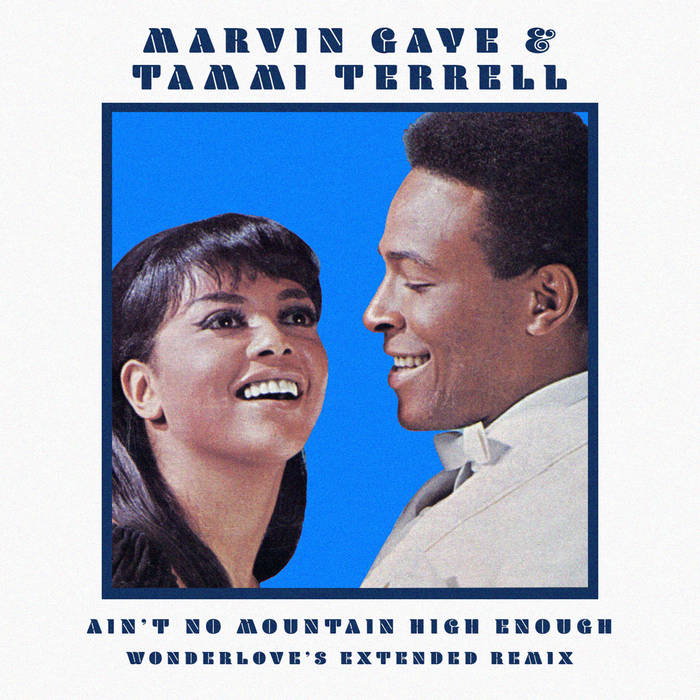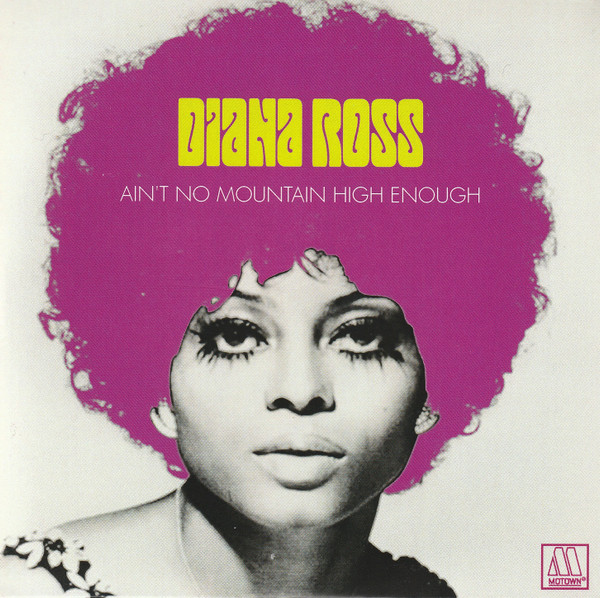 | Ain’t No Mountain High EnoughMarvin Gaye & Tammi Terrell |
Writer(s): Nickolas Ashford, Valerie Simpson (see lyrics here) Released: April 20, 1967 First Charted: May 13, 1967 Peak: 19 US, 22 CB, 18 GR, 19 HR, 3 RB, 55 UK, 3 DF (Click for codes to charts.) Sales (in millions): -- US, 1.2 UK Airplay/Streaming (in millions): -- radio, 131.1 video, 1049.49 streaming |
 | Ain’t No Mountain High EnoughDiana Ross |
Released: July 16, 1970 First Charted: August 8, 1970 Peak: 13 US, 11 CB, 12 GR, 11 HR, 6 AC, 11 RB, 6 UK, 7 CN, 25 AU, 3 DF (Click for codes to charts.) Sales (in millions): -- Airplay/Streaming (in millions): -- radio, 28.5 video, 65.29 streaming |
Awards (Gaye/Terrell):Click on award for more details. Awards (Ross): |
About the Song:The songwriting duo of Nickolas Ashford and Valerie Simpson, who would later find success as recording artists as well, met in 1962 at a church in New York. They wrote “Ain’t No Mountain High Enough” in 1966. Ashford was wandering homeless through Central Park. The buildings around the edges of the parks looked like mountains and he was inspired to write “Ain’t No Mountain High Enough” with its “huge, world-conquering chorus” about not giving up. SG They’d written songs for Ray Charles and Aretha Franklin and Dusty Springfield was interested in recording “Ain’t No Mountain High Enough.” They thought it might be good enough to get Motown’s attention, though – and they were right. Tammi Terrell recorded the song, but Motown chief Berry Gordy thought it might work better as a duet so she was paired with Marvin Gaye SG for the first of what would become seven top-40 hits for the duo. Motown had a habit of recycling songs. Gaye achieved the biggest hit of his career with “I Heard It Through the Grapevine” in 1968; Gladys Knight & the Pips had a hit with it the year before. “Ain’t No Mountain High Enough” was another example of a Motown song that got even bigger with a future release. The original duet features an “arrangement [that] turns stormy and orchestra, where everything explodes.” SG In 1969, the Supremes and the Temptations recorded a version which “is faster and more nervous, built around the swirl of all those voices coming together.” SG When Diana Ross went solo in 1970, Ashford & Simpson were tapped to produce her first album. They were inspired by artists such as Isaac Hayes who were “finding success with long, expansive soul symphonies” SG so they decided to give “Ain’t No Mountain High Enough” a completely new arrangement. SG First, they saved the chorus for the end. Simpson said, “We thought it added drama and suspense.” FB It “becomes a gospel-force eruption of pent-up feelings, a declaration of need as much as one of love.” SG “It’s not just a love song. It’s a woman letting an ex know that things aren’t really over, that there’s always time to get things started again.” SG They also decided to add spoken-word parts. As Simpson said, “We thought Diana had such an interesting speaking voice. We thought it was very sexy and wanted to incorporate that into the production.” FB “Ross, still about two years away from movie stardom, flexes her acting chops and subtly gets across the idea of the song.” SG Gordy didn’t like the spoken-word part or the length, but agreed to release it as a single after trimming it to under four minutes. DJs, however, ended up playing the full six-minute version. SG Resources:
Related Links:First posted 11/5/2022; last updated 7/25/2023. |








No comments:
Post a Comment